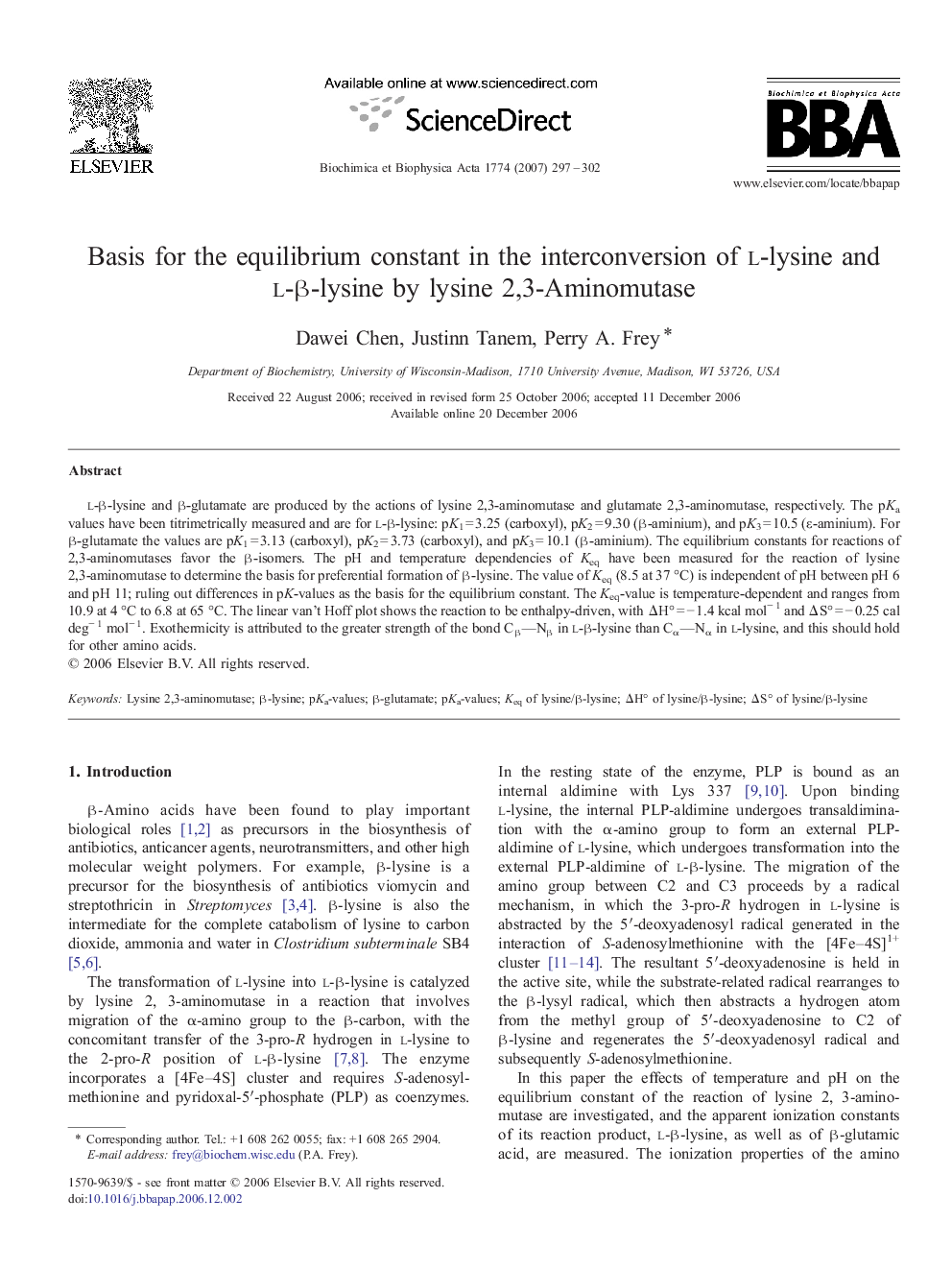| Article ID | Journal | Published Year | Pages | File Type |
|---|---|---|---|---|
| 1178428 | Biochimica et Biophysica Acta (BBA) - Proteins and Proteomics | 2007 | 6 Pages |
l-β-lysine and β-glutamate are produced by the actions of lysine 2,3-aminomutase and glutamate 2,3-aminomutase, respectively. The pKa values have been titrimetrically measured and are for l-β-lysine: pK1 = 3.25 (carboxyl), pK2 = 9.30 (β-aminium), and pK3 = 10.5 (ε-aminium). For β-glutamate the values are pK1 = 3.13 (carboxyl), pK2 = 3.73 (carboxyl), and pK3 = 10.1 (β-aminium). The equilibrium constants for reactions of 2,3-aminomutases favor the β-isomers. The pH and temperature dependencies of Keq have been measured for the reaction of lysine 2,3-aminomutase to determine the basis for preferential formation of β-lysine. The value of Keq (8.5 at 37 °C) is independent of pH between pH 6 and pH 11; ruling out differences in pK-values as the basis for the equilibrium constant. The Keq-value is temperature-dependent and ranges from 10.9 at 4 °C to 6.8 at 65 °C. The linear van't Hoff plot shows the reaction to be enthalpy-driven, with ΔH° = − 1.4 kcal mol− 1 and ΔS° = − 0.25 cal deg− 1 mol− 1. Exothermicity is attributed to the greater strength of the bond Cβ—Nβ in l-β-lysine than Cα—Nα in l-lysine, and this should hold for other amino acids.
